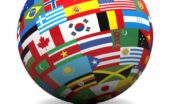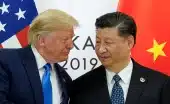Molly Minturn - My family is heartbroken to share that my father died in surgery on Monday, Feb. 10. It…
Shipping: economy, environment, security
Written by Diana Thebaud Nicholson // March 4, 2025 // Environment & Energy, Trade & Tariffs, Transportation // Comments Off on Shipping: economy, environment, security

4 March
Trump Wants to ‘Take Back’ the Panama Canal. Why That’s Not So Simple
President Donald Trump has called for the US to retake control of the Panama Canal unless the cost of passage for naval and merchant ships is slashed.
After Trump threats, Hong Kong firm to sell stake in Panama Canal ports
Trump threatened to take back the canal because of what he called Chinese influence. CK Hutchison, a Hong Kong company, is selling its control in a firm that ran two ports on the canal.
BlackRock strikes deal to bring ports on both sides of Panama Canal under American control
Didi Tang And Alex Veiga, The Associated Press
A Hong Kong-based conglomerate has agreed to sell its controlling stake in a subsidiary that operates ports near the Panama Canal to a consortium including BlackRock Inc., effectively putting the ports under American control after President Donald Trump alleged Chinese interference with the operations of the critical shipping lane.
In a filing, CK Hutchison Holding said Tuesday that it would sell all shares in Hutchison Port Holdings and in Hutchison Port Group Holdings to the consortium in a deal valued at nearly $23 billion, including $5 billion in debt.
The deal will give the BlackRock consortium control over 43 ports in 23 countries, including the ports of Balboa and Cristobal, located at either end of the Panama Canal. Other ports are in Mexico, the Netherlands, Egypt, Australia, Pakistan and elsewhere.
7 February
Trump says China ‘operates’ the Panama Canal – how deep are Beijing’s ties to the key waterway?
(CNN) Donald Trump has begun his second term as president by ramping up pressure on Panama – threatening to “take back” the Panama Canal and accusing the country of ceding control of the critical waterway to a US rival: China.
… There’s no evidence that China controls the canal, which is run by an independent authority appointed by Panama’s government. Beijing has repeatedly denied that it has interfered in canal operations.
13 January
Baltic Sea undersea ‘sabotage’ sets stage for escalating NATO-Russia contest
(ABC) A spate of alleged sabotage operations against undersea cables in the Baltic Sea has raised the prospect of a dangerous 2025 in NATO’s northern theater, with allied leaders vowing closer surveillance of and tougher action against Russian- and Chinese-linked and other ships accused of nefarious efforts there.
“NATO will enhance its military presence in the Baltic Sea,” alliance chief Mark Rutte said in late December, after the last such instance of suspected sabotage, condemning “any attacks on critical infrastructure.”
Rutte’s commitment came after the most recent of three alleged sabotage operations in the Baltic Sea — the damaging of the Estlink 2 power cable and four internet cables on Christmas Day. The Estlink 2 cable — along with the Estlink 1 cable — transfers electricity from Finland to Estonia across the Gulf of Finland.
2024
28 December
Has Russia’s Shadow Fleet, Built to Evade Sanctions, Added Sabotage to Its List?
Russia has assembled a fleet of hundreds of vessels to covertly ship its oil. With so many ships at sea, the idea of using some to cause havoc may be proving irresistible to the Kremlin.
Western officials have long been concerned about Moscow’s so-called shadow fleet, an assemblage of aged tankers created to covertly carry Russian crude oil around the world. Since Russia invaded Ukraine, the worry primarily concerned the use of such off-the-books ships to circumvent Western sanctions and generate revenue to fuel the Kremlin’s war machine.
But Russia’s shadow fleet may now present a more pressing danger to the West.
This week, Finnish commandos boarded an oil tanker that officials suspect had cut through vital underwater cables in the Baltic Sea, including one that carries electricity between Finland and Estonia. The ship, the Eagle S, bears all the hallmarks of vessels belonging to Russia’s shadow fleet, officials said, and had embarked from a Russian port shortly before the cables were cut.
26 December
Finland Says Vessel Suspected of Cutting Cable May Be Part of Russia’s ‘Shadow Fleet’
Finland seized an oil tanker after the latest in a series of disruptions to undersea infrastructure.
The police said they were investigating whether the vessel was involved in the latest suspected act of sabotage on undersea infrastructure: the cutting on Wednesday of the Estlink 2 submarine cable, which carries electricity between Finland and Estonia. The Finnish authorities said Thursday that four other cables carrying data also had been damaged. The police called the latest cable cuts “aggravated vandalism.”
The Finnish authorities said the tanker might be part of Russia’s shadow fleet, which emerged as a way to circumvent Western-imposed price caps on Russian oil transported by sea.
21-23 December
Trump threatens to try to take back the Panama Canal. Panama’s president balks at the suggestion
(AP) — Donald Trump suggested Sunday that his new administration could try to regain control of the Panama Canal that the United States “foolishly” ceded to its Central American ally, contending that shippers are charged “ridiculous” fees to pass through the vital transportation channel linking the Atlantic and Pacific Oceans.
Panama’s conservative president José Raúl Mulino, who was elected in May on a pro-business platform, roundly rejected that notion as an affront to his country’s sovereignty. …
The canal depends on reservoirs to operate its locks and was heavily affected by 2023 Central American droughts that forced it to substantially reduce the number of daily slots for crossing ships. With fewer ships using the canal each day, administrators also increased the fees that are charged all shippers for reserving a slot. With weather returning to normal in the later months of this year, transit on the canal has normalized. But price increases are still expected for next year.
Trump threatens to retake Panama Canal
The U.S. ceded control of the canal to Panama in 1999 pursuant to a Carter administration treaty
(Politico) In two lengthy Truth Social posts Saturday evening, Trump accused Panama of charging U.S. vessels exorbitant rates to pass through the critical waterway. He also claimed that the treaties enabling Panama to take control of the canal in the first place also allow for the U.S. to take it back.
It is unclear what spurred Trump’s invective about the canal. While China has increased its presence in Latin America over the last two decades — and a Hong Kong-based company administers the two ports on each end of the canal — no Chinese commercial or government entity actually has any direct role in managing the flow of vessels through the critical waterway.
The canal is administered by an independent Panamanian government agency, the Panama Canal Authority, and China has made no public gestures towards buying the canal or increasing its footprint in the country in recent months.
2 December
Threatened by climate change, Panama Canal has big plans to combat drought
Canal Authority plans massive dam to secure freshwater for locks
Project could face opposition from local communities and activists
Severe drought in the past year restricted vessel traffic on the canal
(Reuters) – The lush river valleys of El Zaino y La Arenosa in western Panama, home to hundreds of families that eke out a living farming, fishing and raising cattle, could soon be submerged by a massive man-made reservoir designed to ensure the viability of the Panama Canal in the face of a changing climate. Tres Hermanas, with its farms, two schools, churches and a medical clinic, is one of dozens of towns that would disappear in the next six years if the state-owned Panama Canal’s ambitious $1.6 billion project goes ahead.
11 December
Houthi Attacks Turn Back the Clock for Shipping as Costs Pile Up
The transport route around the southern tip of Africa was once little used — but freighters are now forced to take it and are charging higher rates.
To get from Asia to Europe and back, global shipping companies have for decades sailed through the Red Sea and the Suez Canal. But a year ago, the Houthi insurgents in Yemen began targeting vessels in the Red Sea with drones and missiles, forcing shipping companies to divert their cargo around the Cape of Good Hope at Africa’s southern tip, a route that is some 3,500 nautical miles and 10 days longer.
Western-led naval fleets were sent to the Red Sea to quell the attacks, which the Iran-backed Houthis said were a response to Israel’s war on Hamas in Gaza. Despite those deployments, the attacks continued, and commercial vessels have, for the most part, stayed away. And Middle East analysts said they expected the Houthis to keep up their attacks even as Iran’s influence in the region has diminished after the weakening of Hezbollah in Lebanon and the collapse of Bashar al-Assad’s government in Syria.
It’s as if the shipping industry had been transported back to the days before the Suez Canal opened in 1869.
6 December
The threats posed by the global shadow fleet—and how to stop it
(Atlantic Council) Since Russia’s 2022 invasion of Ukraine, the shadow fleet—which previously mostly transported goods to and from Iran and Venezuela—has exploded in size. Today, around 17 percent of all oil tankers are estimated to belong to the shadow fleet, which also comprises other merchant vessels.
When the shadow fleet was much smaller, the global maritime community could manage the risks posed by it. Today, by contrast, the fleet’s size means it poses immediate risks to a large number of crews, coastal states, vessels, and to the maritime environment.
The fleet’s size also means it poses a threat to global maritime rules. The global maritime system only functions when the vast majority of its participants voluntarily follow the rules.
Western governments’ efforts to reduce the shadow fleet through sanctions on individual vessels have only been marginally effective. There are, however, other strategies they could pursue, including engagement with the nations that flag the shadow vessels and investigations to identify and sanction shadow vessels’ ultimate beneficial owners.
15 November
Growing need for a separate United Nations body to address Maritime Security
A new report by the United Nations Institute for Disarmament Research (UNIDIR) suggests that the UN needs to establish a new body dedicated to maritime security. The 77-page Securing the Seas report highlights that current UN structures, like the General Assembly, Security Council, and agencies like the IMO and UNODC lack the comprehensive mandate needed to effectively address global maritime security issues. Given the increasing maritime activities and global reliance on the seas, the report proposes creating a new institutional mechanism to mainstream maritime security across the UN. Lead author Dr. Christian Bueger emphasized the urgency for more structured efforts within the UN to address these growing challenges.
13 November
Quiet before the storm: Is a new maritime security order taking shape in the Black Sea region?
By Serhat Güvenç
In stark contrast to most other fronts in Russia’s war in Ukraine, the Black Sea has been relatively quiet. That quiet, though, follows an incident on September 11, in which a Russian Tu-22M3 BACKFIRE bomber struck a Turkish-operated (and Saint Kitts and Nevis-flagged) merchant vessel, the Aya, with a Kh-22 missile within the Romanian exclusive economic zone.
The Aya incident came in the wake of the activation of the Mine Countermeasures Black Sea Task Group (also known as MCM Black Sea) on July 1, stood up by three NATO members in the region: Bulgaria, Romania, and Turkey.
The task group represents a regional response to the growing threat of sea mines. It is aimed at ensuring the safe passage of ships in the Black Sea both in general and especially in the new grain-export corridor established by Ukraine after Russia’s withdrawal from the UN Black Sea Grain Initiative in July 2023.
27 October
Amid threats, like-minded nations boost effort to keep sea lanes open for trade, security
(Forum)
Published March 26 Updated Oct. 24, 2024
What We Know About the Francis Scott Key Bridge Collapse in Baltimore
The owner and the operator of the cargo ship that knocked down the bridge in March and killed six people will pay more than $100 million to settle a Justice Department lawsuit.
Here’s what we know about catastrophe, the nation’s deadliest bridge collapse in more than a decade.
9 October
What is the economic impact of the shipping industry?
In 2023, the port and maritime industry’s total economic contribution to the United States included an estimated 2.5 million workers earning $214 billion in wages and benefits and generating $311 billion of GDP in the United States.
Over the past five decades, world trade has grown from 25% of global gross domestic product (GDP) to more than 60%,1 with more than 90% of world trade occurring over the world’s oceans.2 US ports play a significant role in moving goods and connecting US manufacturers and American households across the country to global markets.
In the United States alone, imports into and exports out of the United States amounted to $5.1 trillion of goods in 2023, an amount equivalent in size to roughly 20% of the US economy. And over $2.1 trillion dollars, or more than 40% of all goods entering or leaving the United States, passed through a port.3 Ports not only facilitate an extraordinary volume of trade but also serve as essential gateways for tourism, further diversifying their contribution to the economy.
22 May
The Six Choke Points That Can Upend Global Trade
Disruptions to these critical waterways could upend maritime commerce and rekindle inflation.
By Alaric Nightingale
(Bloomberg) Global maritime commerce is facing the biggest confluence of risks in generations: wars in Ukraine and Gaza, China’s tense standoff with its biggest trading partner, the US, and disruption to key waterways because of climate change.
Drone and missile attacks by Yemen’s Houthi militants on cargo ships traveling through the Red Sea—the shortest route between Europe and Asia—are a case in point. Most container ships are being rerouted around South Africa’s Cape of Good Hope, and shipping rates have soared as a result, complicating the task of central banks in Europe and the US that are in the difficult last mile of guiding inflation back to target.
Bloomberg News has identified six “choke points,” essential shortcuts that handle a disproportionate share of maritime trade, along with the risks they face, using data from Clarkson Research Services Ltd., a unit of the world’s largest shipbroker.
[Bab el-Mandeb ; Strait of Malacca, which links the Indian Ocean to the Pacific, is by far the world’s most important maritime choke point ; Strait of Hormuz ; Danish Straits ; Turkish Straits ; Panama Canal]
Each faces a unique set of overlapping problems that could quickly turn an unforeseen incident into a more serious crisis. Think of the 2021 grounding of the Ever Given container ship in the Suez Canal that held up $10 billion of world trade for almost a week, or the Baltimore bridge collapse in March, which sealed off a port that handled $80 billion of goods in 2023.
2021
17 July
How One of the World’s Biggest Ships Jammed the Suez Canal
Four months after the megaship Ever Given got stuck in the canal, neither the canal nor the shipping industry has addressed some of the most critical issues that led to the grounding.
(NYT) When the Ever Given — one of the largest container ships ever built, more sideways skyscraper than boat — got stuck in the Suez Canal for six days in March, it dammed up worldwide shipping and froze nearly $10 billion in trade a day.
For the internet, it was a bottomlessly amusing spectacle. For global shipping, it was a worst-nightmare lesson in the perils of a new breed of mega-freighter operating in tight spaces.
It was, said Richard Meade, the editor in chief of Lloyd’s List, a maritime intelligence publication, “a wake-up call” for the shipping industry.
But four months later, neither the canal, a linchpin of the global supply chain, nor the shipping industry that depends on it, has addressed some of the most critical issues that led to the grounding.
2011
Stranded ship “time bomb” to Great Barrier Reef
(Reuters) – A stranded Chinese coal ship leaking oil onto Australia’s Great Barrier Reef is an environmental time bomb with the potential to devastate large protected areas of the reef, activists said on Monday.
The ship was a “ticking environmental time bomb,” Gilly Llewellyn, director of conservation for the World Wide Fund for Nature (WWF) in Australia, told Reuters. She said this was the third major international incident involving its owners in four years.
Australian government officials say the stricken Shen Neng I belongs to the Shenzhen Energy Group, a subsidiary of China’s state-owned China Ocean Shipping (Group) Company, better known by its acronym COSCO.



